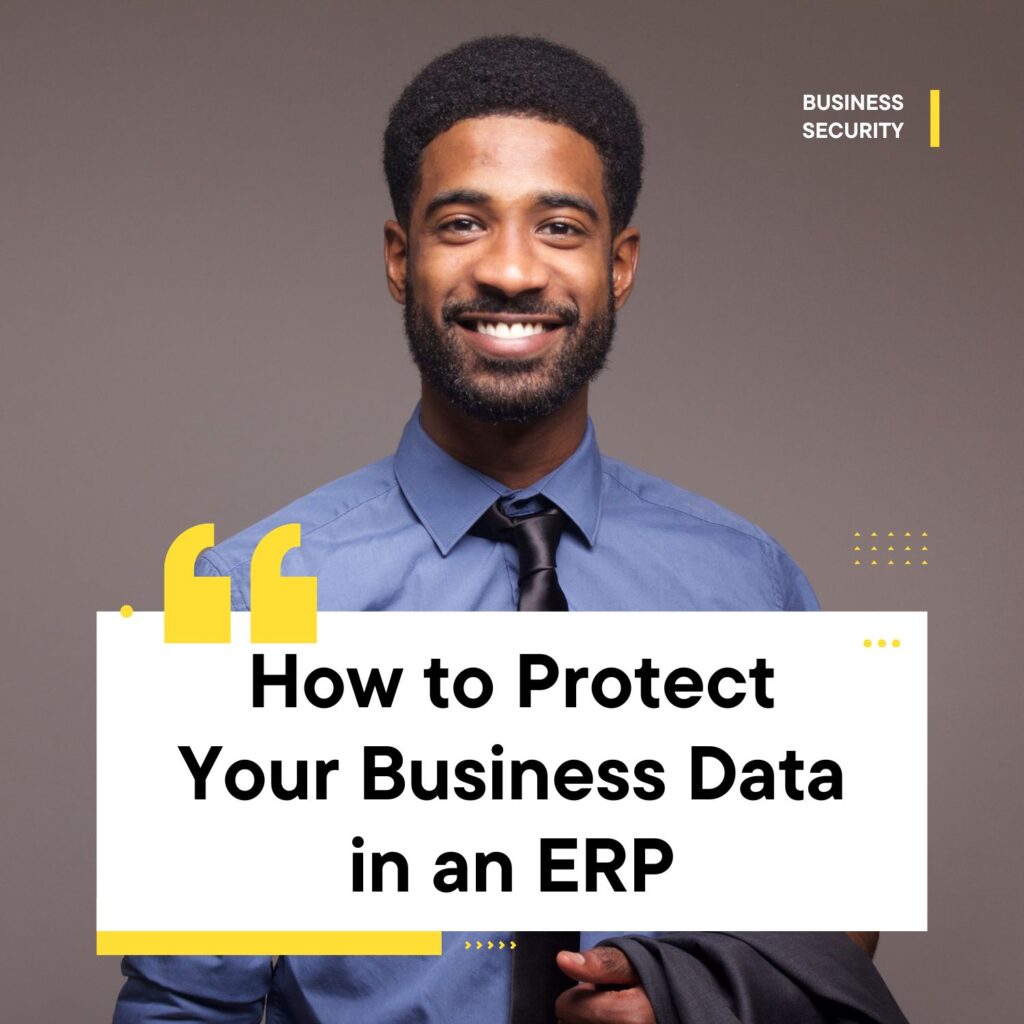In today’s digital age, businesses rely heavily on ERP-CRM systems to manage their operations, customer relationships, and internal processes. While these systems provide immense benefits in terms of efficiency and scalability, they also store sensitive business data that can be vulnerable to cyber threats if not properly secured. Protecting your business data in an ERP-CRM is crucial to avoid financial losses, legal liabilities, and reputational damage. In this article, we will explore best practices to ensure robust data security for your ERP-CRM system.
1. Implement Strong Access Controls
One of the primary ways to secure business data is by implementing strict access controls. Not every employee needs access to all modules and information within the ERP-CRM system. Role-based access control (RBAC) should be used to ensure that users only have access to the data necessary for their specific roles. This minimizes the risk of unauthorized access and data leaks.
Key Steps:
- Define user roles and permissions clearly.
- Implement multi-factor authentication (MFA).
- Regularly review and update access controls.
2. Data Encryption
Data encryption ensures that sensitive business information is protected from unauthorized access, even if a breach occurs. Encryption should be applied to data at rest (stored data) and data in transit (data being transmitted over networks).
Best Practices:
- Use strong encryption algorithms such as AES-256.
- Ensure that data transmissions are secured with SSL/TLS protocols.
- Store encryption keys securely in a separate, protected environment.
3. Regular Software Updates and Patching
ERP-CRM systems, like any software, can have vulnerabilities that cybercriminals exploit. Keeping the software up to date is critical for maintaining security.
Recommended Actions:
- Enable automatic updates if available.
- Regularly check for patches and security updates.
- Monitor software vendor advisories for potential security threats.
4. Backup and Disaster Recovery Plans
No security system is foolproof, and businesses must be prepared for worst-case scenarios such as cyberattacks, accidental data deletion, or system failures. Having a robust backup and disaster recovery plan ensures business continuity in case of a security incident.
Key Elements:
- Regularly back up data to secure, offsite locations.
- Test backups frequently to ensure they are functional.
- Develop a disaster recovery plan outlining steps to restore operations quickly.
5. Employee Training and Awareness
Human error remains one of the biggest threats to data security. Educating employees about cybersecurity risks and best practices can significantly reduce the likelihood of security breaches.
Training Topics:
- Recognizing phishing attacks.
- Safe password practices.
- Reporting suspicious activities promptly.
6. Secure API Integrations
Many ERP-CRM systems integrate with third-party applications to enhance functionality. However, poorly secured APIs can be entry points for hackers. Businesses must ensure that all integrations follow strict security protocols.
Best Practices:
- Use API authentication and authorization mechanisms.
- Encrypt API communications.
- Regularly audit third-party integrations for security vulnerabilities.
7. Conduct Security Audits and Compliance Checks
Regular security audits help identify potential weaknesses and ensure compliance with industry regulations such as GDPR, HIPAA, or ISO 27001. These audits should be conducted by cybersecurity professionals who can provide insights into potential risks.
Security Measures:
- Perform penetration testing to uncover vulnerabilities.
- Maintain audit logs to track system activity.
- Implement continuous monitoring tools to detect suspicious activities.
8. Monitor User Activity and Anomalies
User activity monitoring can help detect unauthorized access attempts or unusual behaviors that may indicate a security breach.
Implementation Tips:
- Set up alerts for multiple failed login attempts.
- Track access to sensitive data.
- Use AI-powered threat detection tools to identify potential breaches.
Conclusion
Securing your business data within an ERP-CRM system requires a multi-layered approach that includes access control, encryption, regular updates, employee training, and continuous monitoring. By implementing these best practices, businesses can minimize security risks and ensure the integrity and confidentiality of their data. Data security is not just a one-time effort but an ongoing process that must evolve with emerging threats and technological advancements. Investing in robust security measures today can prevent costly breaches and safeguard the future of your business.


